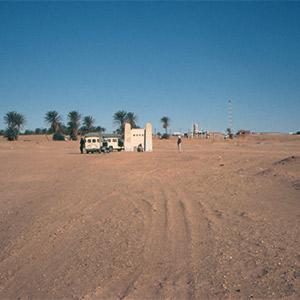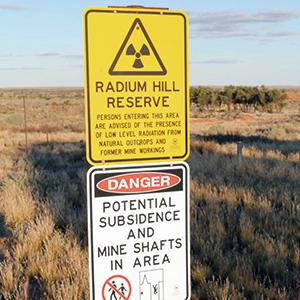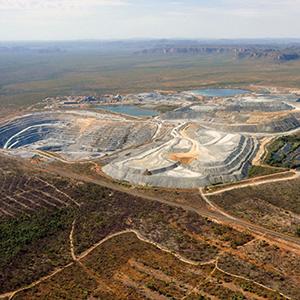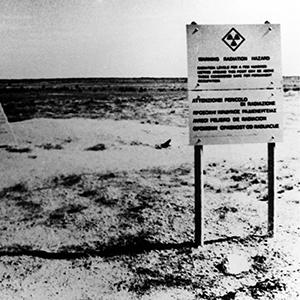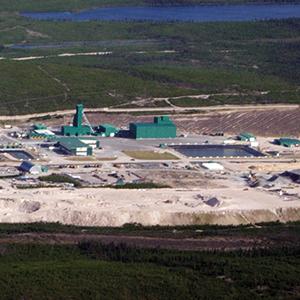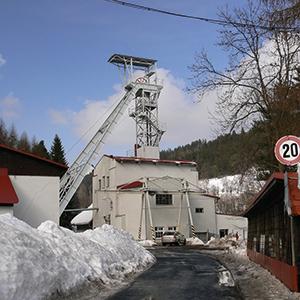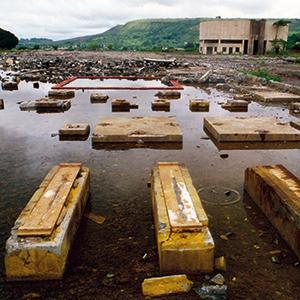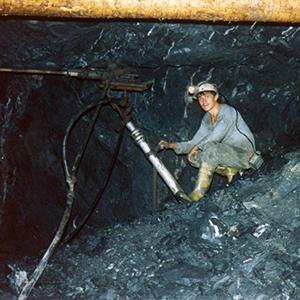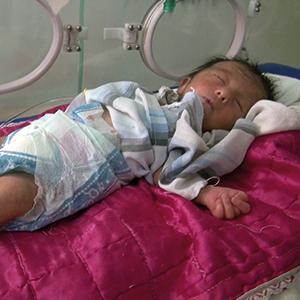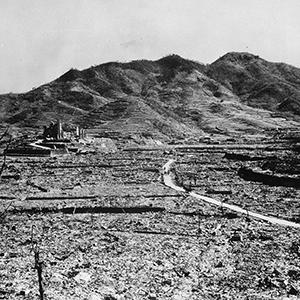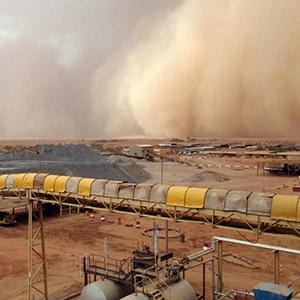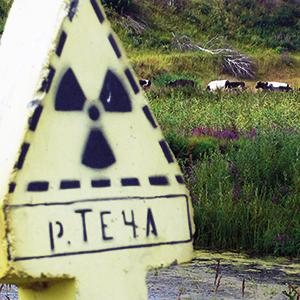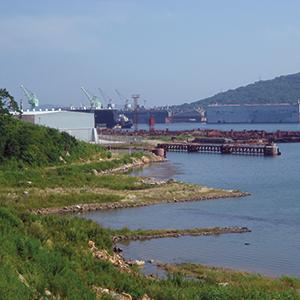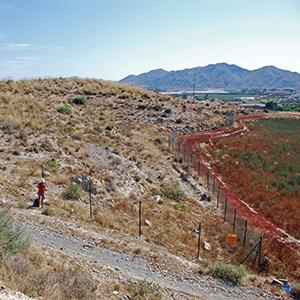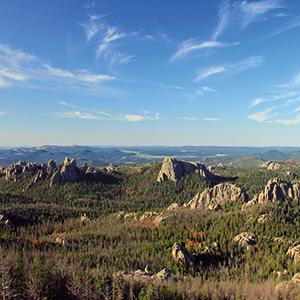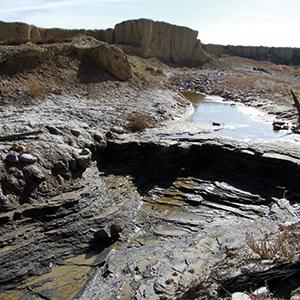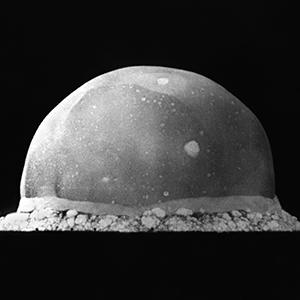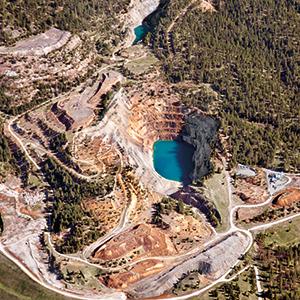Jadugoda, India

Uranium mining in the region around Jadugoda has not only contributed to India’s nuclear weapons program, but has caused grave environmental damage as well. Also, the indigenous Adivasi people are experiencing serious health problems due to continued exposure to radioactivity from working in the mines and living near the irradiated tailings.
Photo: Adivasi protests in Bihar against uranium mining in Jadugoda, Jharkhand. From the documentary “Buddha Weeps in Jaduguda.”
History
When India began searching for fissile material to fuel its young nuclear industry in the early 1950s, it found uranium ore deposits near the sleepy village of Jadugoda (also spelled Jadugora) in the state of Jharkhand. About 35,000 people belonging to the indigenous Adivasi tribes live within a 5-kilometer radius of the mines. These communities had to give up their fields and rice paddies to make room for the mining industry. In 1967, India’s state owned uranium corporation, UCIL, began mining uranium near Jadugoda and, later, near the surrounding villages of Bhatin, Narwapahar and Turamdih, employing 5,000–7,000 people in the mines. A uranium processing plant was also set up, manufacturing “yellowcake,” which is used to provide energy for nuclear power plants and to deliver the fissile material for India’s nuclear weapons program. As a result of low uranium content of 0.06 %, the Jadugoda mines generate large quantities of radioactive waste, so called tailings, which are transported by pipelines to huge tailings ponds. Accidents and spills at these nuclear waste depositories are frequent, however, as safety precautions are minimal. On December 24, 2006 for example, a pipe carrying radioactive wastes from the mill to a tailings pond burst, discharging highly toxic wastes into the Subarnarekha river.
Health and environmental effects
The people of Jadugoda are exposed to radioactivity in several ways: mining and milling operations produce uranium dust and release radon gas, both of which are inhaled by miners and cause internal irradiation. Uranium ore is transported in uncovered trucks on bumpy roads, causing radioactive debris to fall off and land on the side of the road, where it can irradiate unwitting pedestrians for many years.
The mine tailings retain 75–80 % of the ore’s original radiation and are dumped in unlined and uncovered ponds, which emit radon gas and gamma radiation. Villages such as Dumridih are located right next to these tailings ponds. During the dry season, dust from the tailings is blown through these villages; during the monsoon rains, radioactive waste spills into the surrounding creeks and rivers, causing further internal radiation as villagers use the contaminated water for washing and drinking. Radioactive waste rock was also used to construct roads and houses in the villages.
An independent study carried out by the Indian Doctors for Peace and Development (IDPD) in 2007 surveyed nearly 4,000 households in a large-scale case-controlled study. They found that babies born in the affected area had almost twice as many congenital deformities as babies born in non-contaminated control villages and that these led to death in 9 % of the cases – more than 5 times higher than the reference mortality rate. The study also showed a higher rate of infertility among couples in the affected area, a lower life expectancy and a higher mortality rate due to cancer. A study performed by the Kyoto University of Japan in 2004 found excess gamma radiation exceeding 1 mSv per year in the villages and reaching 10 mSv per year around the tailings ponds. As internal radiation probably contributes most to total doses however, the individual levels of exposure to radioactivity are likely to be much higher than these estimates. It has been established that an additional exposure of 1 mSv per year leads to two additional cancer cases per 10,000 people per year, while an additional exposure of 10 mSv would lead to 20 additional cancer cases per 10,000 people per year.
Outlook
As several studies have shown significant health effects of uranium mining on the local population, comparable to those found in other uranium mining sites around the world, the Bihar Legislative Council called in 1998 for an evacuation of the villages at least 5 km away from the tailings ponds as well as more effective safety precautions. Their report was largely ignored and nothing has happened since. Instead, UCIL has financed and published studies that aim to demonstrate that no medical effects are to be expected in the local population. The tragedy in Jadugoda continues. In the process of helping the Indian government develop nuclear weapons, the Adivasi became Hibakusha.
Further information
On YouTube you can find two informative background movies on the subject of uranium mining in Jadugoda:
- “Buddha weeps in Jadugoda” produced by the Bindrai Institute for Research Study & Action: http://youtu.be/upzt4ESu908
- “Jadugoda – The Black Magic,” produced by IDPD: http://youtu.be/eIOmavVcG3M
References
- Rahman S. “Study on health status of indigenous people around Jadugoda uranium mines in India.” Indian Doctor for Peace and Development, 2010. http://ippnweupdate.files.wordpress.com/2010/11/singhshakeel.pdf
- Dias X. “Uranium Mining – Where the debate begins. The Case of Jadugoda.” Ecologist Asia, May 2000. www.docstoc.com/docs/26802217/uranium-mining---where-the-debate-begins
- Koide H. “Radioactive contamination around Jadugoda uranium mine in India.” Research Reactor Institute, Kyoto University, July 8th, 2002. www.jca.apc.org/~misatoya/jadugoda/english/koide.html
- “BEIR VII report, phase 2: Health risks from exposure to low levels of ionizing radiation.” National Academy of Sciences Advisory Committee on the Biological Effects of Ionizing Radiation, 2006, p. 279f, tables 12.5a and 12.5b. www.nap.edu/openbook.php?record_id=11340&page=8
- Sahay V. “Uranium hits Jadugoda tribals.” Financial Express, December 28, 1998. www.expressindia.com/fe/daily/19981228/36255804.html







